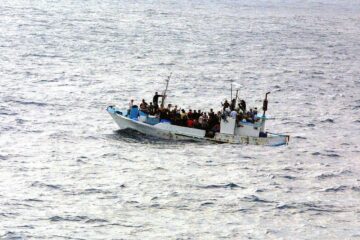![]()
Introduction:
The field of International Economic Law is one that encompasses and affects the many entities that make up the entirety of the international community, from companies to entire nations. The term encompasses many vast and varying fields – international trade laws, international monetary laws, competition laws, intellectual property laws, environmental laws and so much more, as the field evolves. An article by Jeffrey Atik captures the true extent, stating that the field “embraces (or should embrace) alternative perspectives, such as Third World and feminist critique, and interdisciplinary approaches, and concerns itself (or should concern itself) with the distribution of wealth and justice and with the preservation of culture, the environment and peace”[1].
The objectives that international economic law seeks to fulfill is certainly a tall order. Any conflict can have widespread negative repercussions that can affect the health and functioning of many countries. Thus, the need for a comprehensive and effective dispute resolution process in the field of international economic law must be understood in the above context, and its significance cannot be downplayed.
This article will explore the dispute settlement methods used in a major organization intricately involved in international economic law – the dispute resolution methods of the World Trade Organisation (WTO).
The WTO Dispute Settlement Mechanism
Effective resolution of conflict is one of the main objectives of international trade agreements. One of the main reasons for the formation of the General Agreement on Tariffs and Trade (GATT), which was passed in 1947, and governed a multitude of nations, was to swiftly and decisively resolve any disputes. The WTO, which replaced GATT in 1995, sought to continue this practice. For this reason, the Uruguay Round of the WTO talks saw the addition of Annex 2 to the WTO Agreement, which outlined the dispute resolution process, better known as the Dispute Settlement Understanding (DSU).
Article 2 of the DSU further establishes the Dispute Settlement Body (DSB)[2], which is comprised of the representatives of the members of the WTO. It oversees the entire dispute resolution process: “the DSB is responsible for the referral of a dispute to adjudication (establishing a panel); for making the adjudicative decision binding on the parties to the dispute (adopting the panel and Appellate Body reports); generally, for supervising the implementation of the ruling; and for authorizing countermeasures when a member does not comply with the ruling”[3].
The DSB appoints the panels to overlook each dispute, consisting of three members generally, and on special occasions five, according to the stipulations of Article 8[4]. Moreover, an Appellate Body, consisting of 7 members of the WTO, broadly representative of the body, is elected by the DSB, to handle any appeals[5].
The WTO Dispute Settlement Process
The WTO’s dispute settlement system is compulsory for its members, due to their ratifying of the DSU Agreement. The dispute settlement process takes one year, if without any appeal, and one year and three months with appeal[6].
The process is an amalgamation of the various methods of dispute resolution, both adversarial and non-adversarial, structured in such a way as to provide speedy resolution in the shortest time possible. The first stage involves attempts to reconcile the differences between parties by way of consultation and mediation[7]. The consultation offers the chance for both complainants and respondents to evaluate the merits of their case and its viability. This particular step has resulted in about 40% of disputes being resolved in the consultation step without the need for further conflict[8]. At the request of the parties, the WTO Director-General can assist as a mediator or otherwise[9].
Only when the consultation process devolves does the DSB step in to appoint a panel to oversee the dispute, within 45 days[10]. From that period, the panel has 6 months (3 months in case of perishable goods involved) to present its final report, made based on the panel’s findings from the agreements cited. It is first circulated to the parties, and three weeks after to the DSB. The DSB then adopts the panel’s report as ruling or recommendation within 60 days, unless a consensus rejects it[11].
If any party is not satisfied with the result, they may appeal to the Appellate Body, heard by three of the seven members comprising it. This appeal must be made only the basis of “points of law”, that is, legal interpretation, and cannot re-examine the facts or establish any new issues. The appeal process may only take place for 60 days, extended till 90 days maximum, upon which the DSB must adopt the appellate report or reject it with a full consensus[12].
The parties must implement the ruling within a “reasonable period”, failing which they can be subjected to retaliation in the form of trade sanctions and such[13]. In cases such as these, Article 22 provides for another negotiation between the parties to reach “mutually acceptable compensation”. It also provides for an arbitration process, conducted by the original panel, or by arbitrators appointed by the Director-General if unavailable, on the condition that there shall be no second arbitration[14].
Conclusion
The WTO dispute settlement process is a compelling one – the WTO handles many disputes every day, each with the potential to alter the world. And yet, the mechanism resolves conflicts in short periods, taking a maximum of 15 months. This can be attributed to the structure of the process – it incorporates consultations and mediation at the inception of the process, where many conflicts are often resolved, as seen above. Only if the conflict persists is the more adversarial process of evaluation by the panel involved. It must also be noted that where the conflict continues past the DSB’s ruling, due to non-implementation by a party, the DSU agreement once again brings in a possibility of the usage of alternative dispute resolution methods such as negotiation and arbitration, on the apparent failure of the panel
This demonstrates the intention of the WTO to aid the process of dispute settlement by rejecting a completely adversarial process, in favor of a collaborative process to reach a mutual understanding between parties. It is due to this that the WTO’s dispute settlement process is as successful as it is today.
References:
[1] Jeffery Atik, Uncorking International Trade, Filling the Cup of International Economic Law, 15 Am. U. Int’l L. Rev. 1231, 1232 (1999).
[2] Art. 2, Understanding on Rules and Procedures Governing the Settlement of Disputes (1995), https://www.wto.org/english/docs_e/legal_e/28-dsu.pdf (last visited Jul 24, 2020).
[3] A Handbook on the WTO Dispute Settlement System 24 (Cambridge University Press 2) (2017), https://www.cambridge.org/core/books/handbook-on-the-wto-dispute-settlement-system/5743E5516DD8D7EA498D6DC78F81FB9C (last visited Jul 24, 2020).
[4] Supra note 2 at Art. 8.
[5] Id. at Art 2 and 17.
[6] WTO | Understanding the WTO – A unique contribution, https://www.wto.org/english/thewto_e/whatis_e/tif_e/disp1_e.htm (last visited Jul 25, 2020).
[7] Supra note 2 at Art. 4.
[8] Supra note 3 at 51.
[9] Supra note 6.
[10] Supra note 2 at Art. 6.
[11] Id. at Art. 12.
[12] Id. at Art. 16 and 17.
[13] Id. at Art. 22
[14] Id.



0 Comments